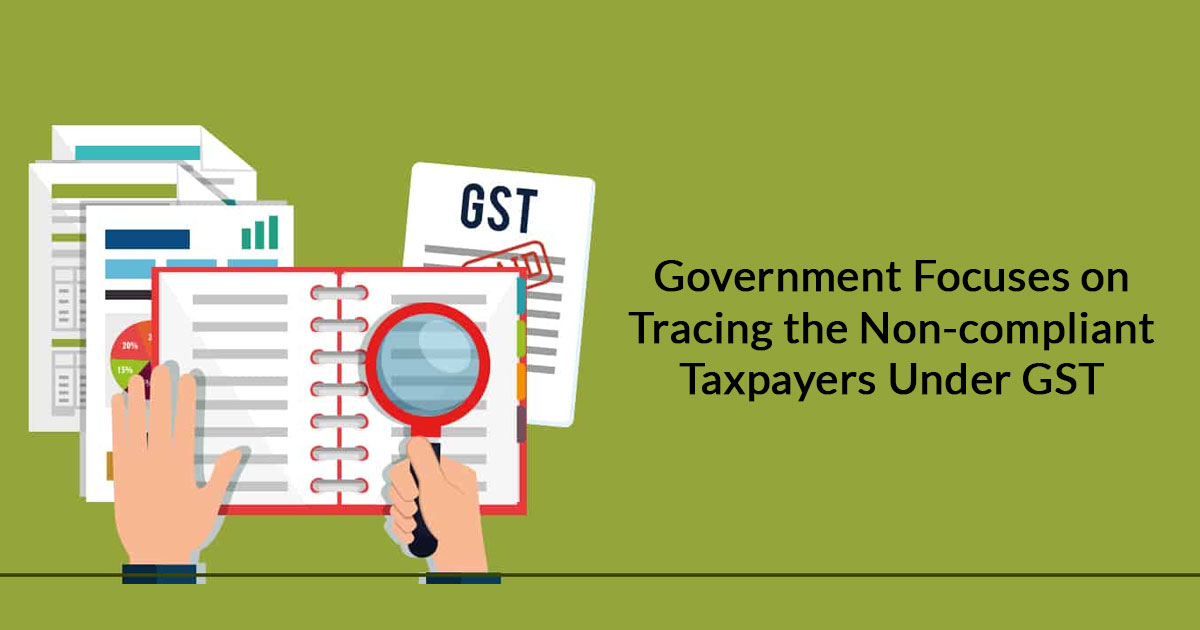Gradually, the revenue generated through tax collection has come down after the great results witnessed in the initial phase when GST was implemented in the country and the speedy collection was done on the basis of the strict tax collection rules.
The deteriorating compliance rate for tax filers is an alarm for the government about the tax evasion and which has prompted the government to take strict measures against the ill practice once again and thus to locate the non-compliant taxpayers. The number of such taxpayers who have not filed GST returns has increased to 28% till the end of the year 2018, which is more than the double as compared to just 10% in November 2017.
As compared to regular taxpayers, the number of composition taxpayers have increased and thus increasing the tax compliance. A 10 percent increase in the non- filers of the tax has been witnessed when we compare the same to its last year when there was no composition scheme introduced. The composition scheme has been most liked and accepted by a number of taxpayers having the turnover less than rs. 1.5 crore as those who opt this scheme has to pay a low nominal tax rate.
Under the influence of several rate cuts and changes brought in the GST taxation rules, the number of non-filers has increased immensely and thus affecting the revenue generated through tax collections.
The expected budgetary target for the year has been rs 13,48,000 crore i.E. Rs 1,12,000 lakh crore per month, which looks dicey to be met.
As per a Kotak institutional equities report, the government is expected to face a deficit in its target by almost INR 1 lakh crore.
The tax evaders and the late tax filers have been the main reason behind the shortfall in the tax revenue collection. Calculatingly talking, the collections done during the first nine months of 2018-2019 is approximately INR 89,600 crore which is far off from the budgetary target for the period. Thus under the influence of the poor tax collection, a collection of INR 1.5 lakh crore is required to be collected in the remaining months to meet the target.
Government’s Plans to Cover the Losses Incurred
A few days back we saw the increase in the late fine for the late taxpayers and many such plans and instructions are going to be practised to recover the loss. The minister of state for finance Shiv Pratap Shukla has clarified through a written reply that the GST authorities have been clearly instructed to investigate thoroughly, the tax evaders and late filers. The authorities have been instructed to visit premises of non-compliant taxpayers if required. They would have to conduct searches and have to implement seizure if required in the way of investigation.
Read Also: Detection of 3626 Goods & Services Tax Evasion Cases Unearthed
Some non-compliant entities have increased the tensions of the government as they are practising the use of fake invoices so as to claim an extra input tax credit. The number of such fake invoices are in a toll. By December, the department has detected and has highlighted 499 such cases of fake invoices which have been presented to claim an extra input tax credit for worth IN 3,800 crore and this is a tremendous increase in the amount which was roughly INR 10 crore between July-march 2017.
Shukla said, “the government has started an extensive outreach programme to create awareness among traders, small business, industry bodies and other stakeholders.” he further said, “the competent authorities would also take action against those who have evaded GST returns filing.”
The Balancing ACT
Meanwhile, the loss happened would be covered against the profitable revenue collected through direct tax collection, including corporate tax and personal income tax, which has witnessed considerable improvement in the period April-November.
Another possible measure which could lower the impact of the lower GST collection is the additional customs revenue.
Continuous efforts have been seen as made by the government in making the process of tax filing and the input tax credit collection easier. As per reports, the government is yet planning to simplify the process for the customers so that they could file complaints against businesses or sellers who are not passing benefits of lower GST to customers or avoiding GST return filing.
Such business owners would be kept in focus and might be investigated further to determine whether they have been filing GST returns regularly or not.
